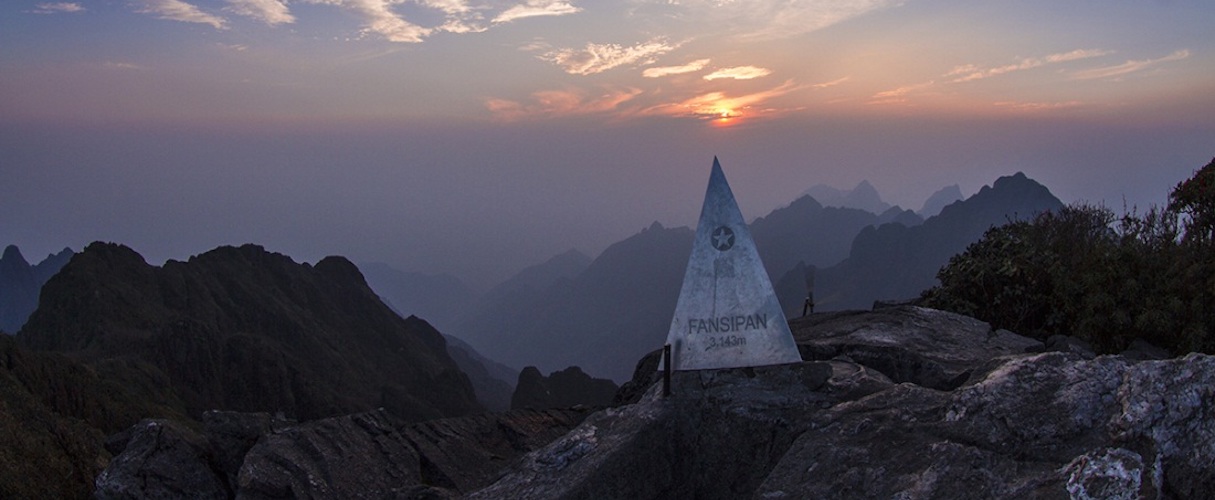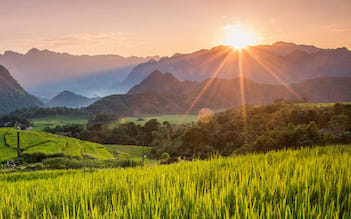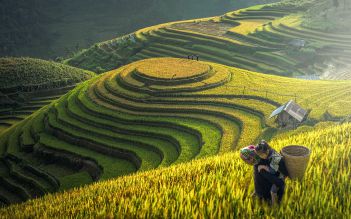Overview
Fansipan is the highest mountain in Vietnam, is one mount in the range of Hoang Lien Son mountain range. Locating at 3,143 meters, it is the highest mountain in the Indochinese Peninsula (Vietnam, Cambodia, and Laos), that's why its nickname is "the Roof of Indochina". It is located in the Lao Cai Province of the Northwest, Vietnam, which is 9 km to the southwest of Sa Pa Town in the Hoang Lien Son mountain range.
Why Fansipan
Climbing
Fansipan is well-known for Fansipan Peak 2 day tours. As the mount can be climbed in a steep and fairly strenuous hike. In the past, it would take about 5-6 days from Sa Pa to reach the mount's peak and return. Now the total time only takes about 3 days, even 2 days, or for experts and strong people, the hiking could be completed in one day and a half.
A small village is located at around 1,500 m hikers can find food or accommodation. Further up, at 2,800 m, is an overnight camp. Most booked trips will include all of the suitable facilities in their service.
Cable car
A cable car to the Fan summit was established in 2015. It departs from a terminal in Muong Hoa Valley and costs 20 minutes to arrive at the summit. The service is recognized for two Guinness World Records which are the longest non-stop three-rope cable car in the world and the greatest elevation high-gap by 1,410 m difference between the highest and lowest terminal.
.jpg)
Fansipan
What to see
Botany witness
The bio-diversity in Fansipan is amazing with 1,680 species of plants, some in which are in Red Book and unique, living only in this area. Hence, the mountain is an appealing natural attraction, especially for tourists who are interested in botany.
Species of plants vary depending on altitude: foothill is home to jackfruit tree, Bombax ceiba, Pterocarya; while the under 700m area is commonly covered by vast rainforest; from 700m to 2000m is home to gymnosperms (seed-bearing plants) such as Fokienia, pine tree; and from 2,800m to the peak is home to short Phyllostachys together with some species of the genus rose, chrysanthemums. In addition, climbers can see beautiful orchids as well as and wildflowers along the way to the summit.
Waterfall
There are several waterfalls scattering around the foothill of the Mount like Cat Cat waterfall, Bac Waterfall, Lanh Waterfall, Ham Rong Fall or on the way conquering the Fansipan Summit full day tours like Love Waterfall. These waterfalls are ideal resting places for climbers after a long journey as well as nice places for capturing photos.
When to visit
Fansipan is not climbable all the time, especially in a monsoon tropical country like Vietnam. The rainy season is obviously a bad choice for even an expert. The best time to climb Fansipan is believed from October to April when it’s dry. However, the climate here is not predictable and often changes unexpectedly. So the key of a plan is keeping up with the weather forecast before going and if the weather indicates any signal of turning bad like heavy raining, climbers had better wait until it gets better. In summer, tourists should be careful of sunny days because of high temperature and low moisture in the air might cause forest-fire.
.jpg)
Fansipan
How to get there
First, you have to get to Sapa from Hanoi by bus, train or by motorbike.
It's about 400km from Hanoi to Lao Cai. It takes you 2 days 1 night on a motorbike while by bus it takes you only 4-5 hours. The train takes you nearly 7 hours.
Coach: There are a lot of transport companies offering night bus to Sapa, most of them require you to spend 10 USD to 13 USD for one way. The total time for traveling is 4-5 hours.
Train: Train is the most popular transport means to Sapa. However, the train doesn’t stop in Sapa, you are absolutely able to take a taxi, bus or motorbike taxi to the destination. The train ticket varies from 7 USD to 30.26 USD for one way. Prices depend on your seat: normal, hard berth or soft berth, amenities air-conditioner or not, etc… The earliest train departs at 8 pm and the latest one is at 11 pm.
Motorbike: motorbike definitely can give you unforgettable moments, however, your safety should be the first priority anyway. There are two most popular options: start riding from Hanoi to Sapa, passing 370km or stay on a coach from Hanoi to Lao Cai then start the ride from here.
From Lao Cai, there are various choices to get to Sapa: taking a local bus 0,5 USD if you don’t mind waiting; motorbike taxi or taxi 12USD.




